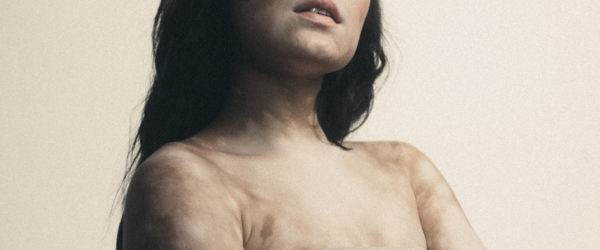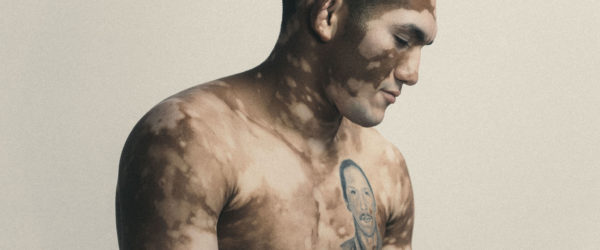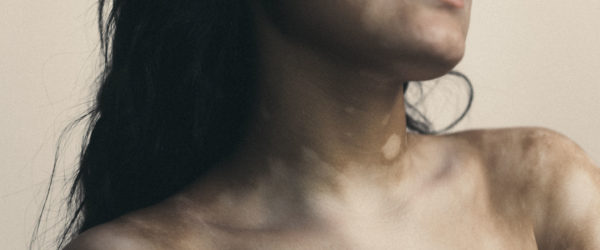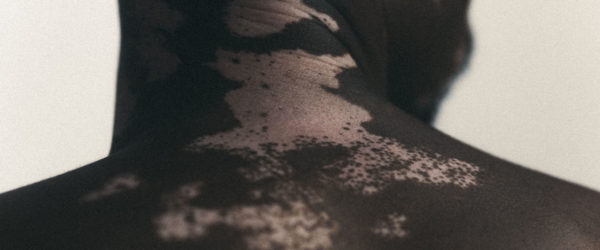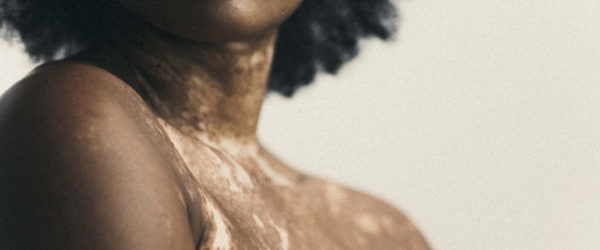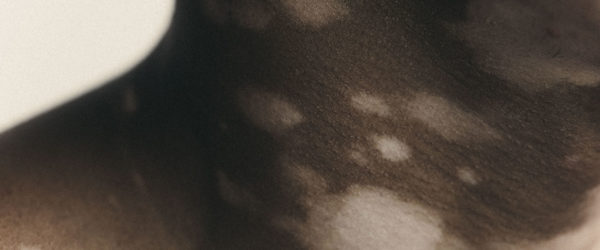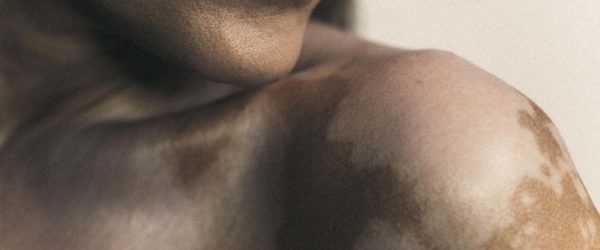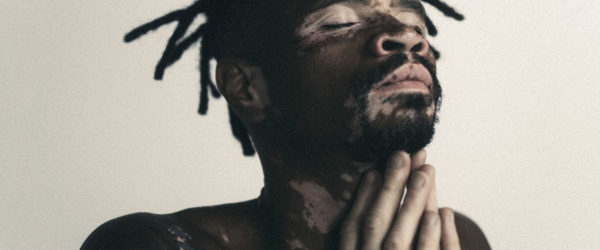Behind the Scenes
Learning to See Differently: The Story Behind ‘Shed Some Light’
Brazilian brother-sister directing duo Fabio and Marilia Meirelles – better known as I.M – have always had a particular talent for creating strong emotional anchors for their audience in every story they tell. But how do they accomplish that effectively when their story places them in psychological waters too deep and murky for most people to understand?
Based on the real-life experiences of its cast and narrator, “Shed Some Light” is an abstract look into the often painful journey of self-discovery faced by sufferers of the skin condition vitiligo. With great empathy and compassion, I.M skillfully and artfully invites both sufferers of the disease and onlookers to open their eyes to a new perspective… to see differently.
We had the chance to talk with I.M about their unique approach to this story and hear first-hand the lessons they learned along the way:
”"Film has the power to give a voice to people who suffer and help us better connect to struggles we may not understand. It is very important to us as Directors - really, a mission in our lives - to use our craft to help those who are underrepresented and marginalized and create a place for them to shine."
Fabio and Marilia Meirelles

FILMSUPPLY: What inspired you to create Shed Some Light?
I.M: We had previously done a film about albinism with amazing results, and we discovered that people with vitiligo share some of the same types of suffering. In that way, it really made sense to take what we had learned and find a new way to bring these beautiful people to light. Film has the power to give a voice to people who suffer and help us better connect to struggles we may not understand. It is very important to us as Directors – really, a mission in our lives – to use our craft to help those who are underrepresented and marginalized and create a place for them to shine. We are so thrilled to be able to do that with Shed Some Light!
Did you face any creative challenges during the development of the film? If so, how did you overcome them?
Yes! Part of the challenge of creating an abstract film comes from finding the right balance for the messaging. On one hand, if you leave it wide open for interpretation with no guidance for the viewer, people walk away with their own message based on whatever they were inspired to think and feel as they watched. That’s not always a bad thing. However, in this case, we knew we needed to leave people feeling unified and inspired in both understanding and action after seeing the film. That requires a decidedly firmer message, which runs the risk of killing the tone and mood of the film. Definitely a challenge!
We explored using soundbites from the cast, but we felt it wouldn’t do justice to the nuances of their individual stories. We considered relying solely on text elements throughout the film, but that felt like too much of a disruption to the abstract visuals. After lots of discussion, we were leaning toward writing a voiceover script and were in the process of researching inspiration for that approach when we came across the TED Talk from Lee Thomas, a journalist and activist with vitiligo who has been a huge champion for the cause over the years. We immediately knew there could be no better voice for our film, so we tracked him down and reached out to ask permission to include his speech. He was amazing and quickly agreed to be a part of our project, and it has made all the difference.
With that problem solved, the final piece was educating viewers with facts that debunk common assumptions about vitiligo. We had an incredible photographer, Alex Takaki, on set that captured the most stunning images of our cast and their beautiful skin, and our team thought those photos would make the perfect backdrop for this final section of the film. Overall, we’re very pleased with how it all came together!
You managed to assemble a pretty incredible set of talent for this project: an activist and journalist, a reality TV star, a non-profit leader, an MMA fighter, a model, an entrepreneur. How did you bring them all together through this process?
To be honest, the pieces sort of fell into place. I think that’s how you know something is meant to be. From the beginning, we think people could see that we came from a real place of honoring true stories and promoting awareness for a cause. Fortunately, we were able to connect with an NGO that deals with vitiligo, which certainly helped. Also, we searched for people with the condition who truly felt comfortable with their skin, so they wouldn’t feel exposed or out of place. Each of them were chosen because they had already gone through the hard work of self-acceptance and were willing to come together in a vulnerable way to spread an important message.
The really cool thing to see is how everything came together at just the right moment to achieve the greatest impact. Our film was originally planned over a year earlier but had to be delayed due to the global pandemic. However, the timing now is so much stronger! One of our main cast members, Natalia, was recently the star of a popular reality TV show, but she wasn’t cast in that show until just after we completed filming for this project. Likewise, the MMA fighter and the model, Melk and Larissa, have both started to have a lot of success recently, which also helps amplify the potential impact we have with every view of the film. It feels like a chain reaction, in a way, and it’s all very heartwarming to see.
What was your vision for the score, and how did you approach the process of creating the right sound?
As always, we knew music would play an incredibly important part in communicating the emotion of our film. With it being an abstract approach, the score really needed to enhance the visual aspects in a more direct way as well, almost walking the line between music and sound design. We experimented with quite a few tracks as placeholders to help establish the mood and pacing of the edit, knowing that we would ultimately need a custom score. In fact, before we ever knew Cubby would be involved in scoring our film, we were actually using one of his songs for a key moment.
When we got to a point where we were ready to develop the final score, our friends at Filmsupply connected us with Musicbed to help us find the right composer. To our delight, they instantly suggested that Cubby would be the best fit for our project, and he was willing to come on board! Having him compose a whole piece for the entire film was very natural, and we had almost zero notes when the first version arrived. He pretty much nailed it right away, so it was a perfect fit and a great collaboration!
As with any abstract film, the editing process requires a different level of engagement and creativity. Tell us about that process.
We have actually had five cuts that were completely different. The film was fully storyboarded, and we drew from some very specific references. The first cut was based exactly on that plan but ended up not working as well as we hoped. We decided to try some different things and engaged a new editor to bring fresh eyes to the project, and that’s when it really started to come to life visually. Then we accidentally discovered Lee Thomas’ TED Talk, and it became the final piece that connected everything together.



What was the most important thing you learned about vitiligo during the process of creating the film?
First and foremost, people should know that vitiligo is neither an infection nor contagious. It’s a skin condition that anyone can develop during life, and it usually comes out of nowhere, often motivated by stressful events. That information is critical for everyone to understand. The prejudice our cast members have experienced in their lives is something no one should have to go through.
We were drawn to the fact that most people who develop vitiligo initially react by hiding to some extent. Whether they do that by keeping their skin concealed under clothes and makeup or by isolating themselves entirely, it creates a place of very deep, very personal pain that is almost impalpable. It’s this aspect of forced self-preservation that guided our creative choices as we explored the mental health impact of the condition.
We’ve seen such a tremendous movement toward more diversity and inclusion in film and advertising, yet people with vitiligo are still vastly underrepresented. Why is it so important to change that fact, and how does your film help in that effort?
Honestly, it’s long overdue at this point. People with vitiligo are unique and beautiful, and the stories they are able to tell through both their pain and their breakthroughs are extraordinary. We are so eager to see them come into the limelight and be truly represented and acknowledged in all areas of culture. That’s why the fact that our cast spans all the way from business to non-profit to sports to advertising and television is so important. We obviously can’t change culture by ourselves or all at once, but we want to do whatever we can to impact those in the areas where we have influence – advertising and film. We hope Shed Some Light ignites new conversations and helps people begin to understand others they may have previously disregarded or avoided. Honest dialogue and compassion are strong first steps to breaking these types of stigmas. Also, having the footage available to license on Filmsupply is an important part of inviting agencies and filmmakers into the cause and giving people with vitiligo a place to shine. All together, we think there is great potential to help us create change!


What advice would you give other writers and directors who want to create a cause-based or culture-changing film?
Sometimes we unintentionally sensationalize issues or fetishize people who are different, but it’s so important to avoid that. Be careful to examine your intentions and your approach to be sure you know what you are communicating in every interaction. At every step of the project, be very honest with participants, show the utmost respect for their journey, and be trustworthy in how you tell their stories.
What do you hope to accomplish with this film?
We truly loved the feeling of connecting a vision of our own with a much bigger purpose. It does something really special to the heart of a film and it’s ultimate impact when that happens, and we’re so grateful to be a part of it! Ultimately, we hope the film raises awareness, alters perspectives, cultivates compassion, and prompts changes that improve the lives of those suffering from vitiligo. Our world gets better when these types of stories are able to be told, and it’s an honor for us to be able to give them a voice! In fact, we put together a comprehensive website for the film that includes the personal stories of each of the cast members, some important information about vitiligo and how you can help support the cause, as well as a fun look behind the scenes at the making of Shed Some Light! We hope you’ll take a look and share it with others.

